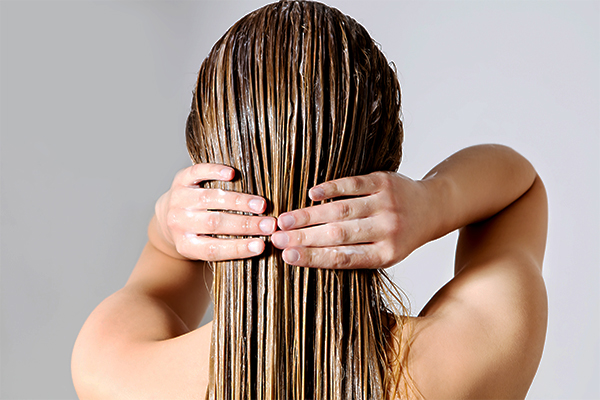
Hydration is key to maintaining soft, manageable hair, especially if you deal with dryness, frizz, or chemical treatments. A hydrate shampoo conditioner is designed to replenish moisture while gently cleansing and nourishing the hair strands. But with so many moisturising agents and ingredients in these formulas, a pressing question arises—can your hydrate shampoo conditioner cause product buildup?
The short answer: yes, it can—but only if it’s used improperly or without the right routine to balance it. Let’s explore how this can happen and what you can do to prevent it.
What Is Product Buildup and How Does It Affect Hair?
Product buildup refers to the gradual accumulation of residue from hair care products, oils, silicones, and minerals on your scalp and hair shaft. Over time, this layer of buildup can block moisture from entering the hair, making your strands feel heavy, dull, or even greasy. If left unaddressed, buildup can also lead to scalp irritation and hinder the effectiveness of other products in your routine.
While styling gels, sprays, and dry shampoos are often blamed for buildup, rich shampoos and conditioners—particularly hydrate-focused ones—can be culprits too.
Why Hydrating Products May Lead to Buildup
Hydrating shampoos and conditioners tend to be formulated with deeply nourishing ingredients such as shea butter, glycerin, coconut oil, silicones, and plant-based emollients. These ingredients are wonderful for locking in moisture and restoring damaged hair. However, when these components are not fully rinsed out or are layered over days without proper cleansing, they can accumulate on the hair and scalp.
If your hydrate shampoo conditioner is silicone-based, it may leave a thin coating on each strand to smooth frizz and enhance shine. Though beneficial in moderation, this coating can create a barrier that traps dirt and oils—especially if you don’t use a clarifying shampoo from time to time.
Signs That Your Hair Has Product Buildup
Here are some common indicators that your hydrating products might be causing more harm than good:
-
Hair feels weighed down and lacks volume
-
You notice a greasy or waxy texture even after washing
-
Your scalp itches or feels coated
-
Products don’t seem to work the way they used to
-
Hair looks dull and lifeless instead of glossy and vibrant
If any of these sound familiar, it might be time to reassess your routine.
How to Use Hydrate Shampoo Conditioner Without Causing Buildup
The goal isn’t to stop using your hydrating products—especially if they’re improving your hair’s moisture balance—but to use them strategically. Here’s how:
1. Alternate With a Clarifying Shampoo
Once every week or two, use a clarifying or detox shampoo to remove excess residue from your scalp and strands. These shampoos are formulated to cut through buildup and restore your hair’s natural shine and bounce. Just don’t overuse them, as they can also strip essential moisture.
2. Focus on Proper Rinsing
After applying conditioner, take an extra minute to thoroughly rinse your hair with lukewarm water. Residue is often left behind when products aren’t rinsed out fully.
3. Apply Conditioner on Mid-Lengths to Ends Only
Avoid applying your hydrate shampoo conditioner directly to your scalp. Focus instead on the mid-lengths and ends, which need moisture the most. This prevents unnecessary residue near your roots.
4. Avoid Layering Too Many Products
If you use leave-in conditioners, serums, or styling creams in addition to a hydrating shampoo and conditioner, make sure they’re all lightweight and compatible. Heavy layering increases the chances of buildup.
5. Know Your Hair Type
Thicker, curly, or coily hair may handle rich hydration better than fine or straight hair, which can be weighed down easily. Choose formulas that match your hair type to avoid over-moisturising.
Best Ingredients to Look For (and Avoid)
Not all hydrating products cause buildup equally. It comes down to the ingredient list. When selecting a hydrate shampoo conditioner, look for:
Good for Moisture Without Buildup:
-
Aloe vera
-
Glycerin (in moderation)
-
Panthenol (vitamin B5)
-
Lightweight oils like argan or jojoba
-
Hydrolyzed proteins
Ingredients That May Cause Buildup Over Time:
-
Non-water-soluble silicones (e.g., dimethicone)
-
Heavy waxes
-
Mineral oil
-
Petroleum-based ingredients
Reading labels can help you choose wisely and avoid formulas that create a coating that’s difficult to rinse away.
Should You Stop Using Hydrate Shampoo Conditioner?
Not at all. In fact, hydrate shampoo conditioners are essential for many people, especially those with dry, coloured, or damaged hair. The key is balance. Proper rotation, scalp care, and occasional clarifying treatments will keep your hair in its best condition.
If you’ve been noticing signs of buildup, don’t rush to ditch your current products. Instead, try adjusting your routine using the tips above. Sometimes, just one small change—like clarifying your hair once a week—can make all the difference.
Final Thoughts
Hydrate shampoo conditioner plays a critical role in restoring hair’s health and maintaining moisture. However, overuse or improper use can lead to product buildup, dullness, and scalp issues. Being mindful of how you apply your products, choosing the right formulas, and incorporating clarifying treatments can help you enjoy all the hydrating benefits without the side effects.
Stay hydrated—but stay smart about it.